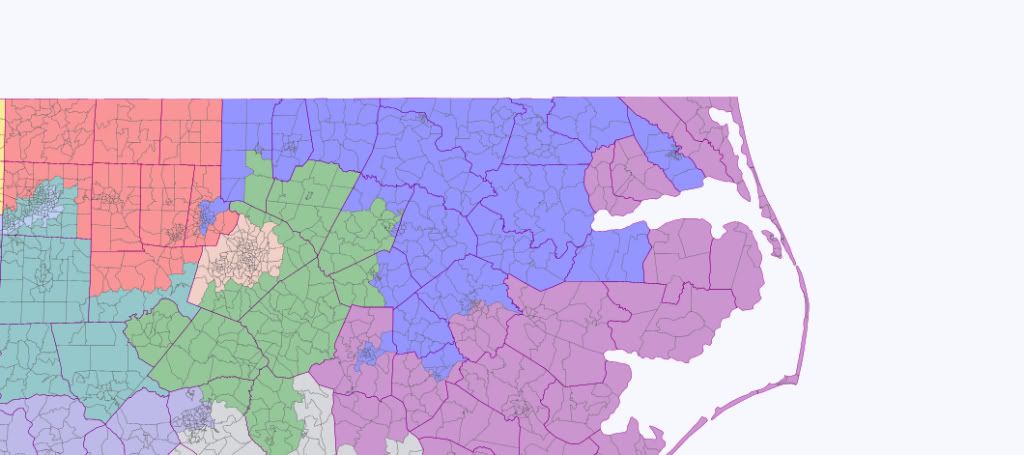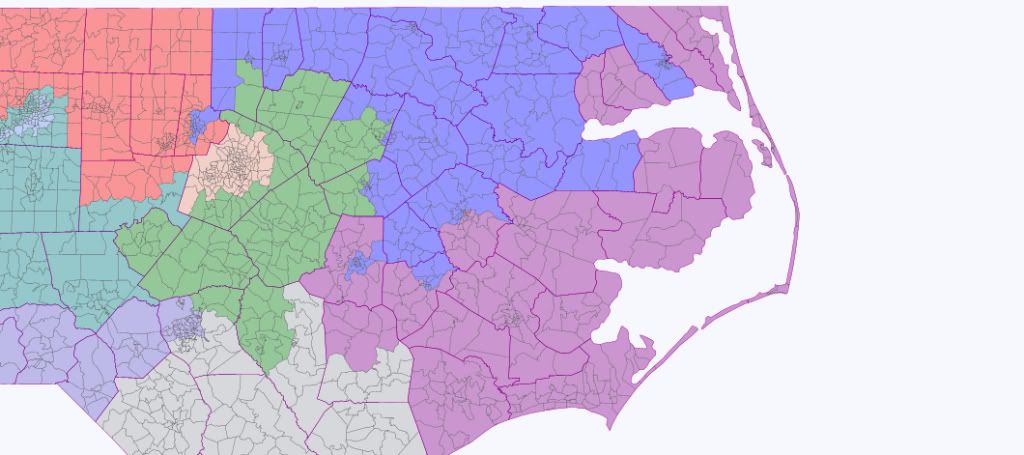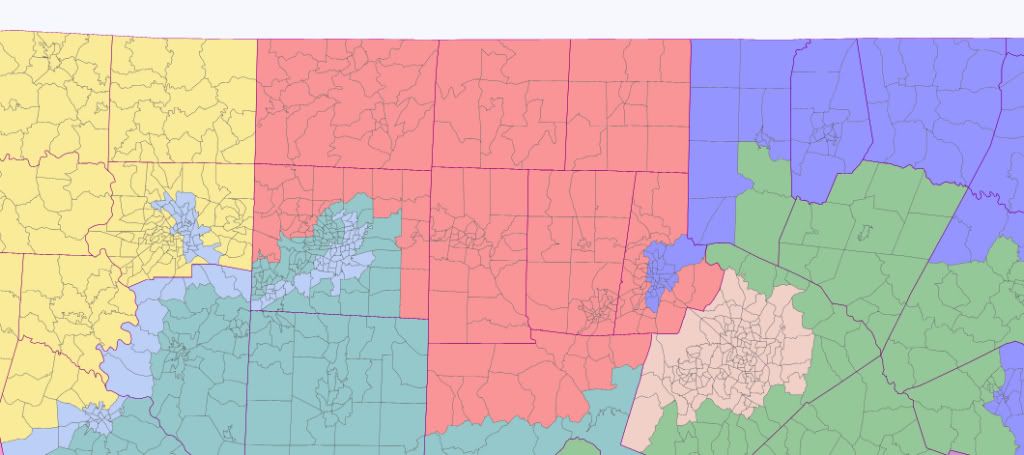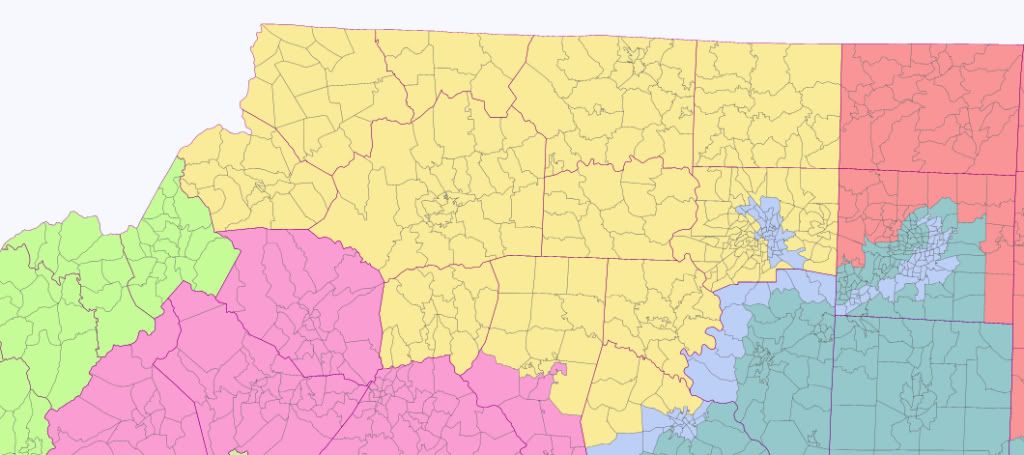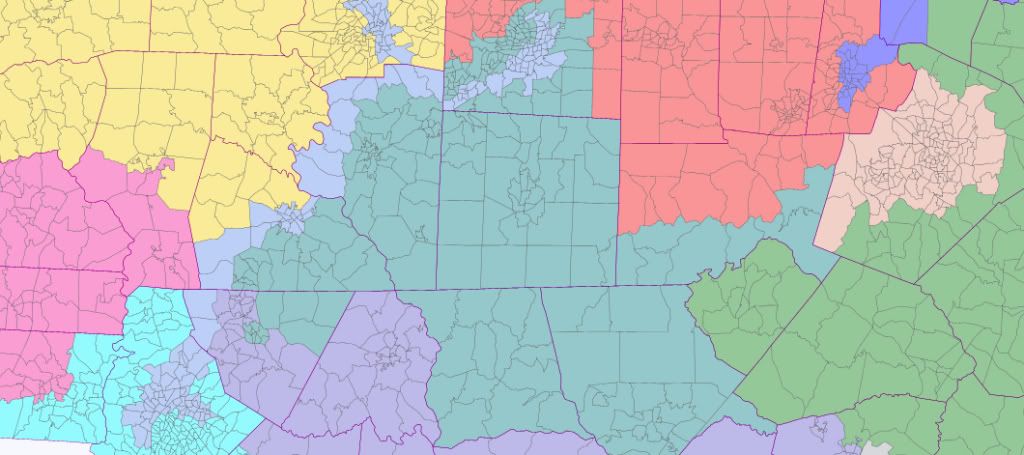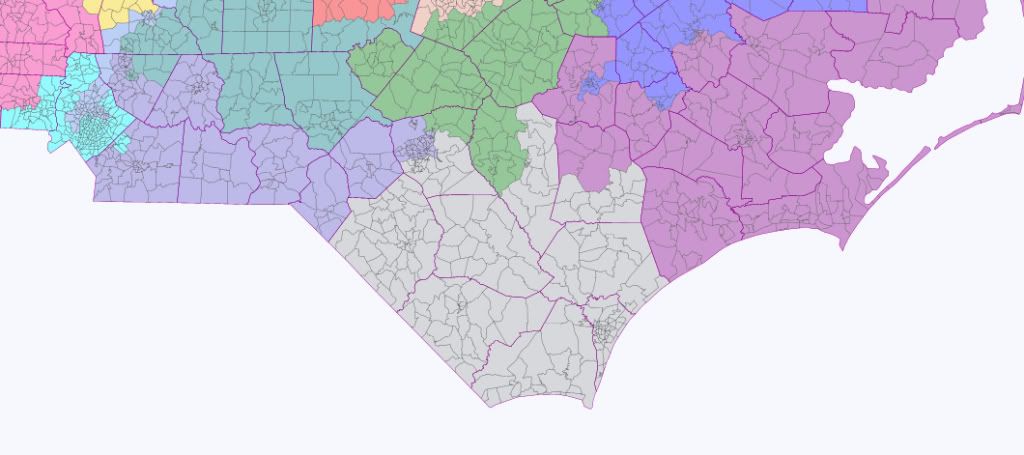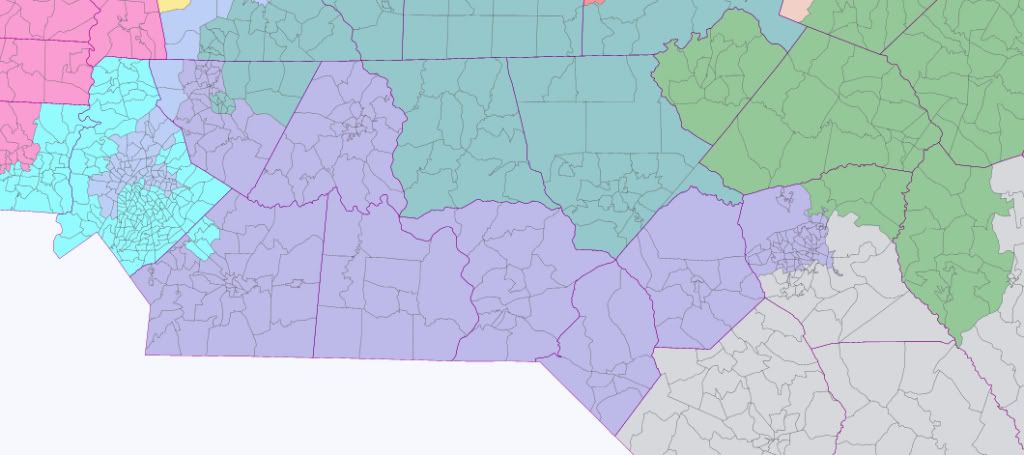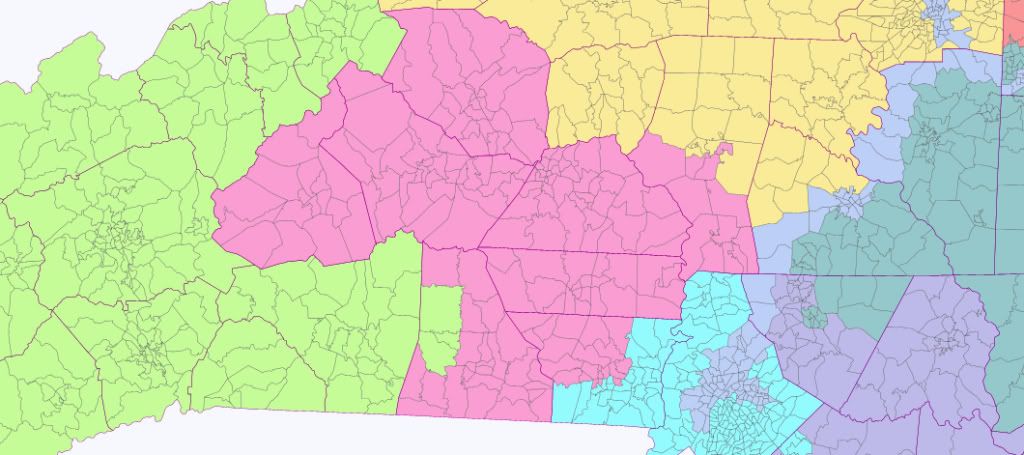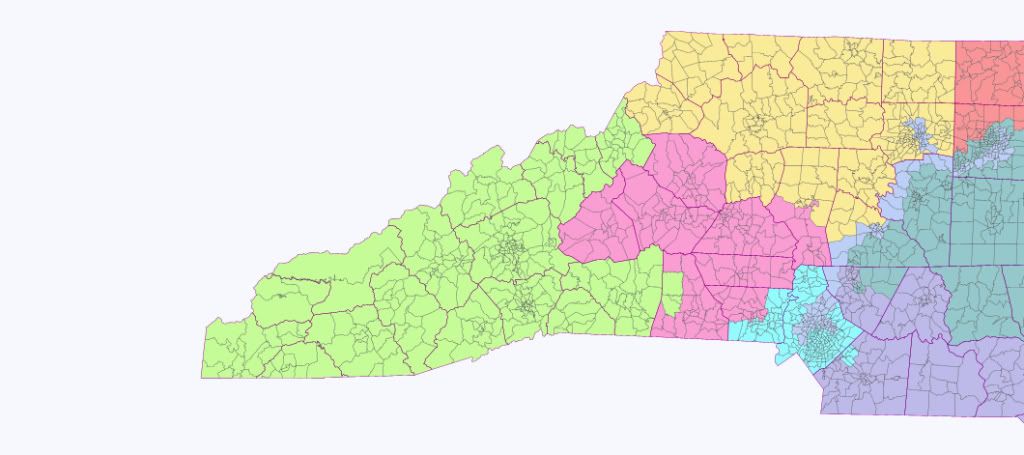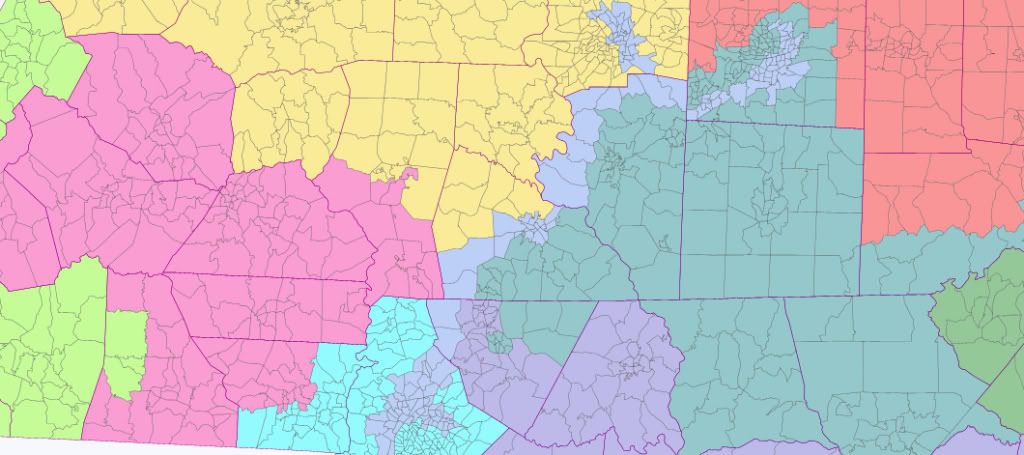Oregon is the latest guinea pig in my experiment with Wyoming Rule redistricting. Because under the rule, the number of seats in the House are apportioned by dividing the U.S. population by the population of its least populous state, Wyoming, Oregon would add two districts to its existing five.

Somehow, I managed to draw a 5-1-1 map for Democrats, although part of it is strong incumbency value in Oregon…and part of it is that Oregon is much more liberal on the federal level than it is on the state level.
Unfortunately, the app doesn’t have voter information for Oregon; fortunately, I did most of my division along county lines, and most of the rest of my division along lines I’m familiar with as a former Oregon resident.

OR-01 (safe Democratic)
Interestingly enough, when I originally drew this Wyoming Rule-sized district, the neat little combination of adjacent Washington and Columbia counties was the perfect size. Then I realized I was still using the 2000 Census data rather than the 2008 population projections, and that went to hell because the western Portland suburbs have positively exploded population-wise over the past decade. So I had to chop out the western halves of those counties, removing a lot of more conservative, rural areas to create a district that, especially with Yamhill County gone too, is even safer for Democratic Rep. David Wu. I say “even safer” because a lot of non-Oregonians are under the impression Wu isn’t completely fireproof in his current district. In 2004, Wu won going away despite being forced to admit to late-breaking claims of attempted date rape, against a highly qualified, moderate candidate with gangbusters fundraising in a cycle Republican enough that Oregonians cast the state’s electoral votes for Sen. John Kerry of Massachusetts by an uncomfortably close four-point margin while passing a constitutional amendment banning same-sex marriage in a state that today, just a few years later, has an openly gay man as mayor of its largest city; has the highest-ranking openly bisexual politician in the country in Secy. Kate Brown, first in line to the governorship; and has both of the nation’s only two openly gay state Supreme Court justices, both of whom were elected by popular vote. In 2010, amid a 63-seat loss for House Democrats nationally, Wu won by a double-digit margin over a challenger endorsed by the highly influential and fairly liberal Portland daily newspaper The Oregonian. If Wu is safe now, he will live forever here, even without the little spur into the western Multnomah County suburbs.
OR-02 (safe Republican)
This was one of the trickiest districts to draw, which is funny, because on the current map, it’s obviously just the half of the state east of the Cascades. But recent population growth in Deschutes County has complicated the traditional breakdown of electoral politics in Oregon, with exploding Bend nearly handing the county to Sen. Barack Obama of Illinois in 2008; Sen. John McCain of Arizona only won Deschutes County by 0.3% in the worst showing by a Republican there since 1964. This year, Republican Jim Huffman appears to have won the county over Democratic Sen. Ron Wyden, the incumbent, by a whopping 22 votes in a year Republicans almost won the Oregon gubernatorial election for the first time since 1982, when moderate Gov. Victor Atiyeh blew now-Gov. Ted Kulongoski out of the water (how times change). Because districts are smaller under the Wyoming Rule anyway, I decided to cut out Central Oregon, including Deschutes County, and because Bend is by far the largest population center in the current district, that left me with a lot of ground to make up despite the fact each district is much less populous now. To make up for it, the district absorbed all of Josephine County and extended slightly upward into Douglas County. Instead of being just an Eastern Oregon district, it is now effectively Eastern and Southern Oregon, minus the Central Oregon subregion. Rep. Greg Walden, a Republican known to be close to incoming House Speaker John Boehner, would be fine here if his Hood River residence wasn’t drawn out of the district. I think he would probably move east to run here again, although if he chose not to, State Senate Minority Leader Ted Ferrioli of John Day would probably be the Republicans’ strongest potential candidate. If former Sen. Gordon Smith of Pendleton, defeated by now-Sen. Jeff Merkley in 2008, decided to run, he would be a very strong candidate, but he might be too moderate for this intensely red district’s Republican primary voters.
OR-03 (safe Democratic)
Instead of containing most of part of Clackamas County, this district is now Multnomah County-only, containing nearly all of Portland proper. Just to give you an idea of how safe Democratic Rep. Earl Blumenauer is here, he destroyed challenger Delia Lopez in the portion of Multnomah County now in his district by a better-than-3:1 margin. In the small part of Multnomah County now in OR-01 that has been reallocated to this compact district, Wu did equally well. This would be one of the safest Democratic districts in the country.

OR-04 (likely Democratic)
I took great pains here to keep Rep. Peter DeFazio, Democrat of Springfield, in this drawing of the district. Somehow, despite being one of the most left-wing members of the House, DeFazio is able to win reelection in a swingish district even when he barely campaigns. With the district stripped out and reapportioned as an Oregon Coast district extending a finger out to take in the twin cities of Eugene and Springfield, which drive the strong Democratic bias of Lane County, I doubt DeFazio would have much trouble. The Oregon Coast is traditionally union territory, and although unions don’t have as much sway in Oregon as they do in some other states, most of the coastal counties are good for Democrats at the federal level.
OR-05 (likely Democratic)
There are two important things to note about this district. First, Marion and Clackamas counties may be swingy on the state level, but on the federal level, they generally prefer Democrats. Second, Yamhill and Polk counties are much less friendly to Democrats at every level, and indeed, they are among the most conservative counties in the Willamette River Valley (although Linn County is by far the most conservative). Despite that, and despite the fact that on paper, this district looks like a tossup, I think it’s likely Democratic. Without the numbers, it’s hard to justify my reasoning here, but basically it goes like this: Chris Dudley may have won practically this entire district in the gubernatorial race, but Obama carried it in 2008 and Rep. Kurt Schrader, the incumbent Democrat, defied the polls in a serious way to win this district so frequently mentioned as a potential Republican pickup, so consistently held by a Democrat. Schrader, who wife is a state senator from Canby (still locked in an as-yet-undecided race for reelection, by the way), has actually been drawn out of this district, but I think a Salem-area Democrat like Brian Clem, a fairly young state representative who has stated his ambitions for higher office, would be a strong candidate here. Fellow Salem-area state Rep. Vicki Berger would probably be the Republicans’ strongest candidate, but she would slot in to the left of several Blue Dogs as a member of the U.S. House of Representatives, so she would probably fail to win the nomination. West Linn-based state Rep. Scott Bruun, who won the Republican nomination this year, has been drawn out of the district along with Schrader.
OR-06 (likely Democratic)
Schrader and Bruun both wound up in this new Portland-area district, which covers the swingy Clackamas County suburbs of Oregon’s largest city, as well as eastern Multnomah County. Fiscally conservative, wealthy Lake Oswego and Wilsonville are more than balanced out in this district by strongly Democratic, working-class Gresham and Milwaukee. Lake Oswego is rapidly turning blue anyway, preferring former (and now future) Gov. John Kitzhaber over Chris Dudley and Schrader over Bruun this year, what with the Oregon Republican Party forgetting what made Vic Atiyeh and Gordon Smith so popular (hint: a combination of bipartisan credentials and socially moderate, environmentally conscious positions). It is entirely possible a rematch between Schrader and Bruun could take place, or that failed gubernatorial candidate Chris Dudley could mount a bid for the House from his Lake Oswego mansion. I think this district should be pretty good for Democrats, though.
OR-07 (swing)
This district includes the tiny Republican counties of Wheeler and Sherman, as well as the larger Republican counties of Crook and Linn, as well as the Democratic counties of Hood River and Benton and the swingy, blueing counties of Deschutes and Wasco. It also borrows large chunks of Democratic Lane County (excluding especially liberal Eugene and Springfield, though) and Republican Douglas County. To be blunt, I have no idea what will happen in this district, although I suspect that if current demographic trends and growth rates hold, it will be solid territory for the Democrats by the time of the next redistricting in 2022. As it is, I think it may tilt Republican. Walden has been drawn into this district, and while he could win here, I think he might prefer to run in his current OR-02. Freshman State Sen. Chris Telfer of Bend, who represents much of Deschutes County and waged an unsuccessful bid for state treasurer this year, may be a stronger candidate to run on the Republican side. State Sen. Rick Metsger of Welches, who did not seek reelection this year, is a potential Democratic candidate (he lost the Democratic primary for secretary of state to Brown in 2008).
Thoughts on the map or the Wyoming Rule?
